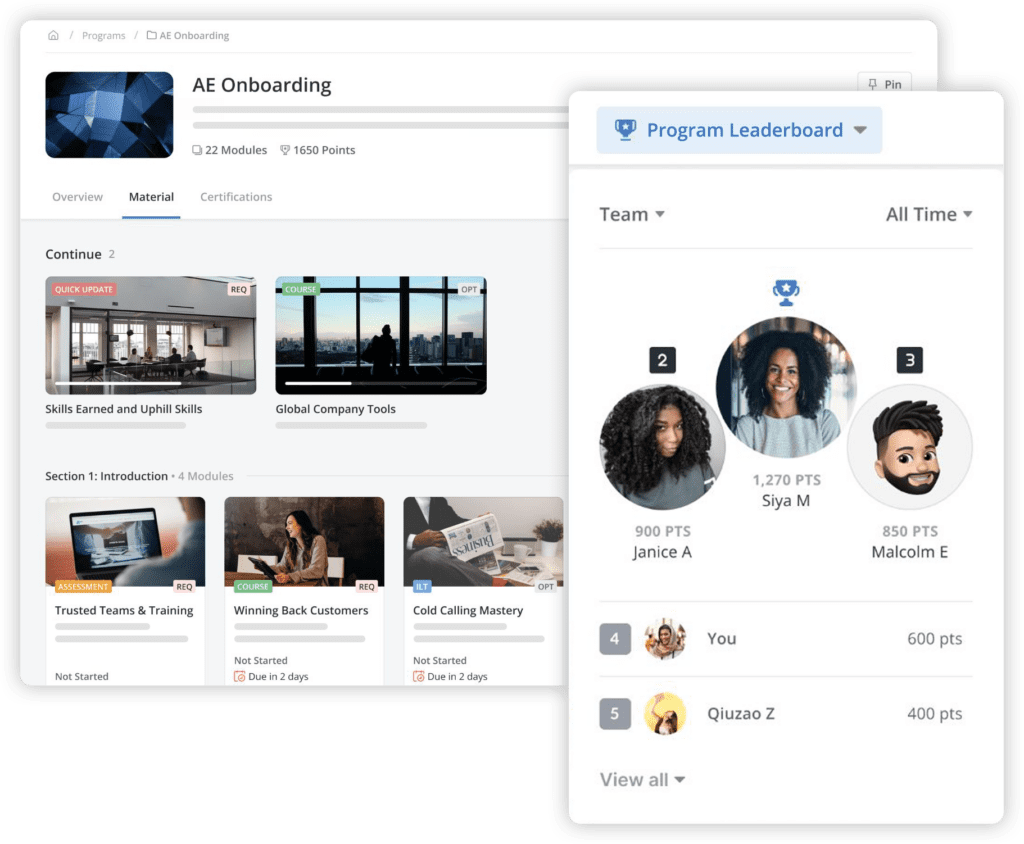You’ve probably heard of the Challenger Sales methodology. With such an evocative name, you may wonder if it could fit your business. Before you decide that, though, you need to ask yourself a few questions — such as, “What is Challenger Sales?” and “It is really right for us?”
Today, we’re rounding up those answers and more. Here’s our in-depth look at Challenger Sales methodology and how to leverage it.
Key takeaways
- Evaluate your sales team’s skills, personalities, and market context to determine if the Challenger Sales model is a good fit.
- Provide training and education to equip sales reps with the knowledge, skills, and mindset needed to become effective Challengers.
- Equip your sales team with the necessary resources, content, and tools to support their adoption of the Challenger methodology.
What is the Challenger Sales model?
There are a lot of different sales methodologies to choose from. The challenger selling model is just one, and it’s well-known in the industry because it is the methodology that helped top sales reps win throughout the 2008 Great Recession.
Proposed by Brent Adamson and Matthew Dixon in “The Challenger Sale,” this approach is based on the personalities of your sales team. You’ve got archetypes like the hard worker, relationship builder, and lone wolf — but the challenger is the one to keep an eye on.
This person “challenges” the status quo by addressing needs your customers may not even know they have. It’s all about presenting new possibilities — not just a sales call, but a truly collaborative conversation. The results can include more deals, stronger connections, and better business.
Hard worker
Challenger
Relationship-builder
Lone wolf
Problem solver
It can be especially helpful during periods of economic difficulty where budgets are restricted, and products become harder to sell.
While other approaches may assume the customer knows best, Challenger Sales methodology training helps push your sales reps to use their own intuition and insights. The idea is to challenge the buyer with ideas they may not have considered, placing your company and offering in a high-value position.
Is every sales team a good fit for the Challenger Sales model?
The Challenger Sales process is built around a specific personality type. It’s best for reps and teams who can:
- Take control without being aggressive.
- Translate insights into actionable value for customers.
- Present disruptive ideas as helpful and constructive.
Not everyone fits this description—and that’s okay. There are plenty of other sales models that may be a better fit for different personalities, unique skill sets, and simpler sales cycles.
Challenger Sales model steps
There are plenty of Challenger Sales model examples out there, but they all boil down to a few basic steps:
Start a conversation by asking a disruptive, highly relevant question and “challenging” what the customer thinks they know.
Deliver insights by connecting that question to a problem buyers may not have considered.
Build your case with data, examples, logic, and emotion.
Present an answer that neatly addresses the customer’s new concerns.
Showcase your offering as the best way to reach out and grab that answer.
Remember, the success of the Challenger Sales process depends on your reps being both sellers and teachers. Don’t just throw them into this role; build your sales team’s skills to help develop confidence and encourage creativity.
Adopting the Challenger Selling model
Ready to get started? Here’s how to adopt the Challenger Sales model:
Use a variety of assessments to determine how your teams approach tasks, handle virtual selling challenges and leverage their talents.
Build Challenger Sales training opportunities to help reps learn how to disrupt without offending and teach without patronizing. This often requires a shift in existing mindsets, which may prioritize relationships and “protecting the status quo.”
Provide how-to guides, Challenger Sales model examples, mock sales calls, and sales enablement tools to set your reps up for success.

Roll out the Challenger Sales methodology to one rep or team. Compare results against other models to see whether the model is a good fit. For instance, consider using conversation intelligence technology to see if your teams are applying challenger in the field.

Gather and analyze data to better understand what your teams are doing, when, and why. Provide feedback through coaching and ongoing training to help turn every rep into an effective challenger.
Although each of these steps is important, you should prioritize training and content. That’s because these two elements can make the difference between success and failure for many reps. After all, the Challenger Sales model might feel like a departure from what they originally learned, what they’re comfortable with, and — sometimes — what they believe about sales overall.
Pros and cons of the Challenger Sales model
Remember, the Challenger Sales methodology is just one option, and it may not work for every team. It’s important to do your research well ahead of time and pay close attention during the Challenger Sales training phase; that way, you can identify whether obstacles are just part of the learning curve or signs that this may not be the right approach for you.
Consider these pros and cons of the Challenger Sales model:
Pros
Cons
- Leverages behaviors and habits of high-performing sales reps.
- Helps manage and control complex sales cycles.
- Presents new ideas for customers and reps alike, helping prevent stagnation and burnout.
- Provides unique perspectives and insights on the customer’s business.
- May not work for all personality types and skill sets.
- Likely not a good fit for simple relationships or transactions.
- Requires extra research and deep market understanding to remain successful over time.
- Can come across as aggressive or overly assertive if done incorrectly.
The key takeaway here is that you can’t adopt the Challenger Sales model — or any sales methodology — as a one-size-fits-all solution. You have to take everything into account, from your reps’ unique personalities to your customers’ expectations. That’s how you stay flexible, scalable, and customer-centric in an increasingly complicated (and competitive) market.
Implementing the Challenger Sales method
To get your team started with the Challenger Methodology, start by taking these first few steps:
- Assess your sales team’s current capabilities, strengths, and areas for improvement. Identify reps who align with the characteristics of successful Challengers and evaluate your organization’s readiness to embrace a new sales approach. This assessment may involve conducting personality assessments, skill evaluations, and market analyses to understand the context in which the Challenger methodology will be applied.
- Provide comprehensive training and education to equip your sales team with the knowledge, skills, and mindset necessary to become effective Challengers. This training should cover not only the principles of the Challenger Sale but also practical strategies for implementing these principles in real-world sales scenarios. Offer workshops, seminars, and coaching sessions to reinforce learning and encourage the adoption of Challenger behaviors and techniques.
- Equip your sales team with the resources, content, and tools needed to support their implementation of the Challenger methodology. This may include developing tailored sales collateral, presentation materials, and messaging frameworks that align with the Challenger approach. Additionally, leverage technology and sales enablement tools to streamline processes, gather insights and provide ongoing support to sales reps as they navigate the Challenger journey.
Helping your teams become challengers
The Challenger Sales process may feel like a new approach, but it’s based on things you already know — like how to get more out of a customer conversation and which skills to encourage among your reps. If you want to succeed with this model, you’ll need an in-depth understanding of your market, customers, and offerings — plus teaching techniques, assertiveness skills, coaching opportunities, and more.
To integrate all of these things, it’s best to unite your approach with sales training software like Mindtickle. Whether you’re exploring the Challenger Sales model, onboarding new team members, providing ongoing training, or just communicating helpful feedback, sales training software keeps your most important tasks in one place.
Scale Up your Sales Training
Want to see for yourself? Schedule your free Mindtickle demo today.
Request a DemoThis post was originally published in October 2023 and was updated in May 2024.



 By Christian Pieper
By Christian Pieper

 By Rahul Mathew
By Rahul Mathew